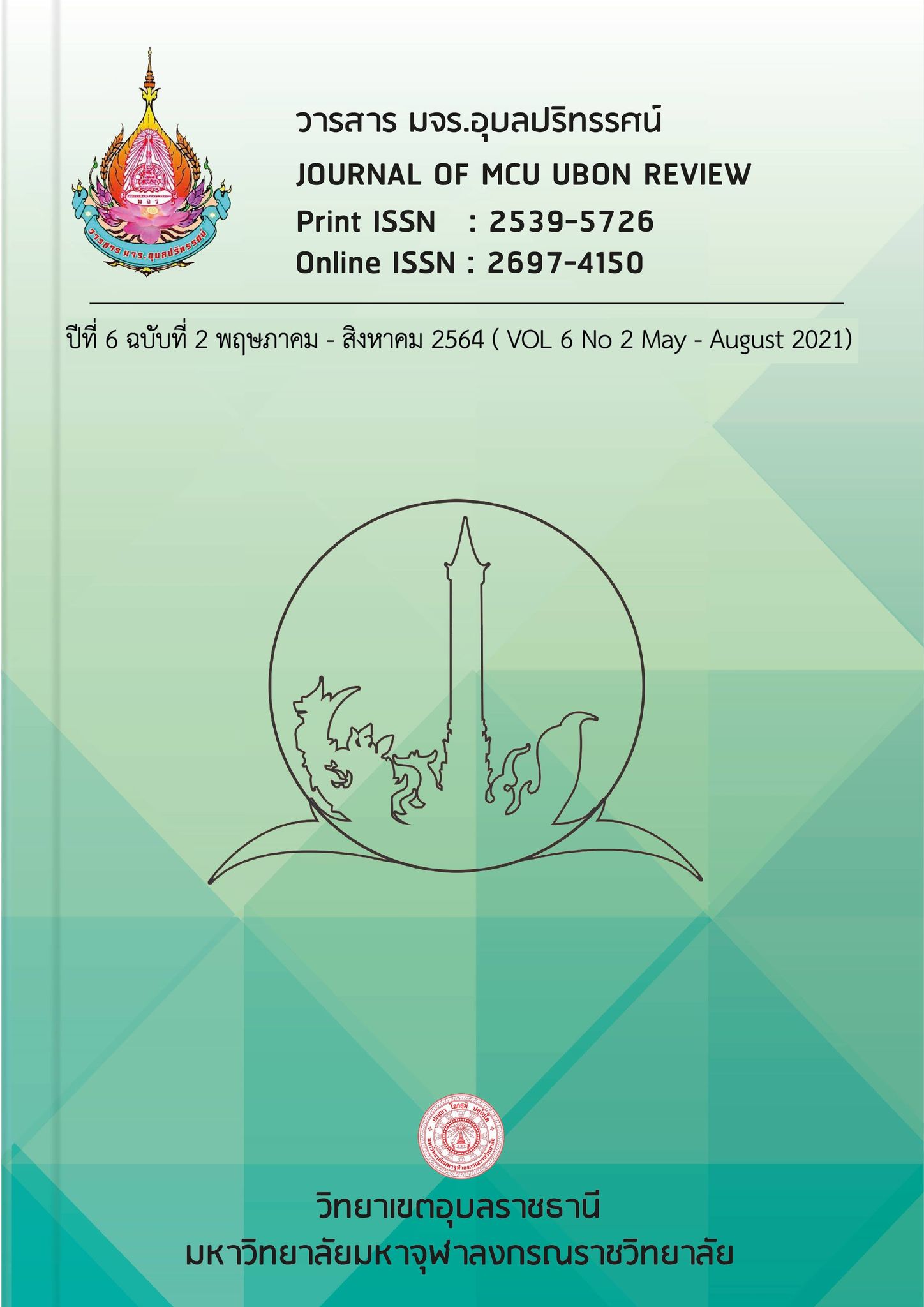BUDDHIST WELL-BEING AND BUDDHIST PSYCHOTHERAPY INNOVATION TO REDUCE THE RISK FACTORS OF DEPRESSION AMONG YOUTH
Main Article Content
Abstract
This research objectives were 1) to study the state of problems and the risk factors affecting youth’s depression 2) to develop the well-being indicators and examine structural validity of the Buddhist well-being assessment form and 3) to study the counseling process according to Buddhist psychology to reduce risk factors affecting youth’s depression. This research was mixed methods research. Eight key informants included Buddhist experts, Buddhist psychological experts, youth counseling and guidance experts and 8 experts in a small group discussion. The sample consisted of 120 youth aged between 13-15 years who are studying in Secondary School Year 1-3. Research tools were interview form, small group discussion and assessment form. Data analysis were percentage, mean, and second order confirmatory factor analysis and the qualitative data were analyzed by content analysis. The results showed that 1) The state of problems and the risk factors affecting depression of youth have 3 main aspects which were (1) psychological aspects such as stress and pressure (2) physical aspects such as genetic diseases and neurotransmitters in the brain (3) social condition aspects such as society expectations and child rearing 2) The indicators of Buddhist well-being which based on Bhàvanà 4 principal or 4 cultivations have 4 components and 46 indicators that congruenced with the empirical data (χ2=38.80, df=27, P-value=0.066, RMSEA=0.060). 3) The counseling process according to Buddhist psychology to reduce risk factors affecting youth’s depression integrated important principles such as Sikkhàttaya or the threefold learning, Yonisomanasikàra or systematic attention and Sati or mindfulness which are defined in 4 elements as follows: (1) Counseling Principles to reduce risk factors affecting youth’s depression consisted of 5 steps (2) The steps of counseling according to Buddhist psychology (3) Way of thinking and behavior modification techniques to adjust the way of thinking according to Buddhist psychology consisted of 5 steps and (4) youths screening and developing with Buddhist well-being assessment was well-being assessment based on Bhàvanà 4 or 4 cultivations
Article Details
References
กรมสุขภาพจิต. (2561). คู่มือปฏิบัติการดูแลวัยรุ่นที่มีภาวะซึมเศร้า สำหรับบุคลากรสาธารณสุขและบุคลากรทางการศึกษา ตามแนวทางการดูแลวัยรุ่นที่มีภาวะซึมเศร้า สถาบันสุขภาพจิตเด็กและวัยรุ่นราชนครินทร์. กรุงเทพฯ: บริษัท บียอนด์ พับบลิสซิ่ง จำกัด.
ประยงค์ สุวรรณบุบผา. (2544). จิตบำบัดแนวพุทธศาสน์ เล่ม 2. กรุงเทพฯ: มหามกุฎราชวิทยาลัย.
พระพรหมคุณาภรณ์ (ป.อ.ปยุตโต). (2556). โยนิโสมนสิการ: วิธีคิดตามหลักพุทธธรรม. กรุงเทพฯ: ปัญญาประดิษฐาน.
พบแพทย์. โรคซึมเศร้า. สืบค้น 1 พฤษภาคม 2563. จาก https://www.pobpad.com/โรคซึมเศร้า.
มหาวิทยาลัยมหาจุฬาลงกรณราชวิทยาลัย. (2539), พระไตรปิฎกฉบับภาษาไทย. ฉบับ
มหาวิทยาลัยมหาจุฬาลงกรณราชวิทยาลัย, กรุงเทพฯ : โรงพิมพ์มหาจุฬาลงกรณ
ราชวิทยาลัย.
ยงยุทธ วงศ์ภิรมย์ศานติ์. สติบำบัด: ทางเลือกใหม่รักษาโรคซึมเศร้า. สืบค้น 10 มกราคม 2563, จาก https://www.bbc.com/thai/40115831.
วิชชุดา ฐิติโชติรัตนา และคณะ (2560). “การพัฒนารูปแบบการปรึกษาแนวพุทธจิตวิทยาบูรณาการของพระสงฆ์ที่มีบทบาทให้การปรึกษา”. วารสารสันติศึกษาปริทรรศน์ มจร. 5 (1)): 103-104.
Jöreskog, K.G. & Sörbom, D. (1996). Lisrel 8: Structural equation modeling with the SIMPLIS command language. Chicago: Scientific Software International.
Soper, D.S. (2021). A-priori Sample Size Calculator for Structural Equation Models [Software]. from https://www.danielsoper.com/statcalc.


